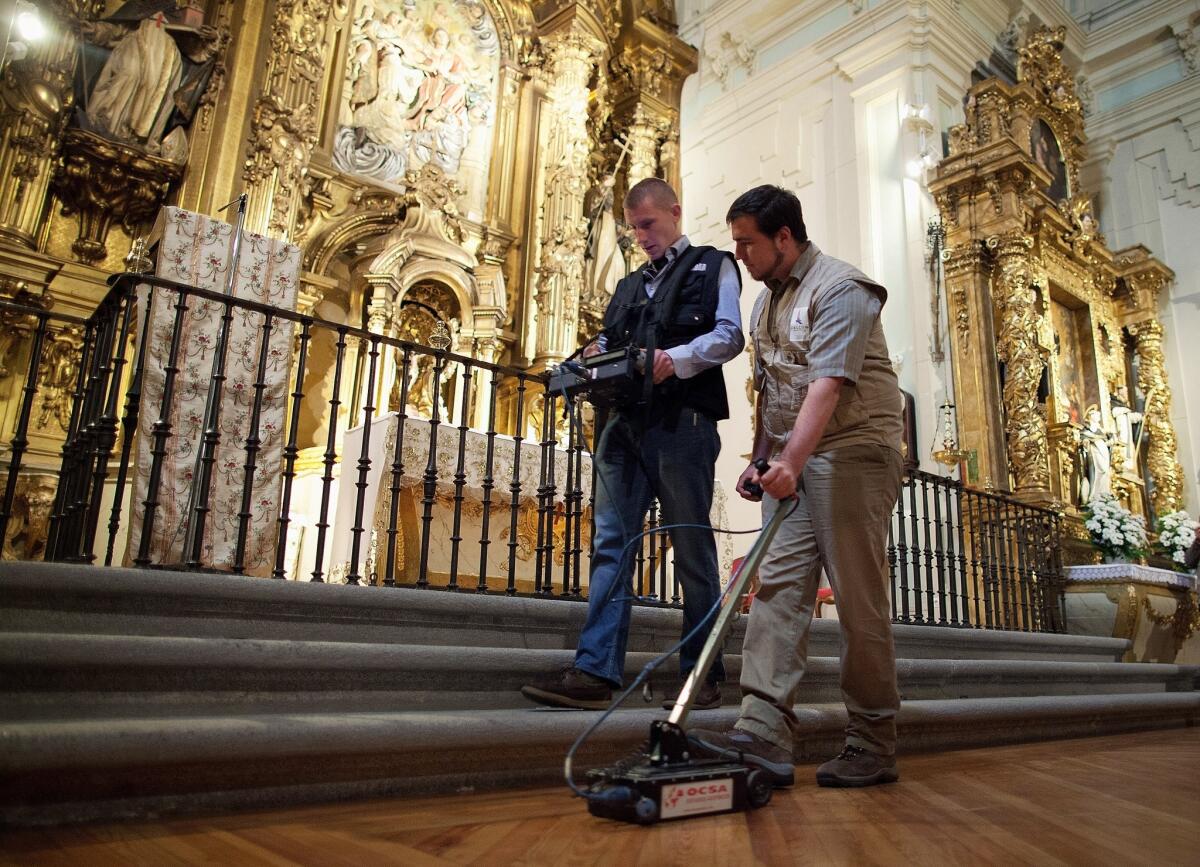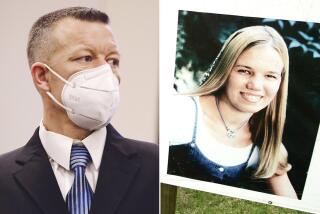Researchers enlist technology in search for Cervantes’ remains

Reporting from Madrid — Four centuries after the death of one of Spain’s most famous writers, scientists on Monday began using ground-penetrating radar in hope of solving the enduring mystery of where Miguel de Cervantes is buried.
Generations of nuns have kept alive the lore that the writer’s final resting place is at the Convent of the Barefoot Trinitarians in Madrid. As many as 15 bodies of devotees are believed to have been interred in the convent’s walls or foundation. A plaque outside says Cervantes is among them. But no one knows the exact spot.
City officials have long sought to solve the puzzle but say until recently the technology didn’t exist.
“It’s magnetic impulse machinery, like an X-ray,” explained Luis Avial, technical director of Falcon High Tech, a geophysics company hired by the city to scan the convent. “We put this strong signal into the ground and X-ray the shape of the cavities, structures and graves.”
Cervantes, who is often called the Shakespeare of the Spanish language, is credited with inventing the modern novel with his tale of the chivalrous Don Quixote. He and the English Bard died within days of each other in 1616, a year after publication of the final volume of “The Adventures of the Ingenious Nobleman Don Quixote of La Mancha.” But Cervantes died penniless.
“Miguel de Cervantes was a soldier without luck, a man without fortune, a member of the nobility without relations,” said Fernando de Prado, a historian and genealogist who has spent much of his life studying that of Cervantes and is co-directing the search for his remains. “He was an extremely nice person, but he had very bad luck.”
Cervantes was born near Madrid around 1547. He served in the Spanish navy and was wounded in the Battle of Lepanto in 1571. He survived gunshot injuries to the chest and left arm and lost the use of his left hand. Then he was kidnapped by pirates and held captive for five years.
Although his last will and testament are long lost, his dying wish is said to have been to be buried inside the convent of the nuns who helped negotiate his freedom.
Built in 1612, the convent is still home to a dozen cloistered nuns, ages 23 to 92. The squat brick building, surrounded by tapas bars in a bustling night-life district of downtown, has been renovated several times, including a 1673 overhaul in which parts of its foundation were reset.
On Monday, the nuns sang hymns from behind a second-floor screen at a Mass dedicated to Cervantes, as technicians prepared their radar equipment outside. An ornate golden chapel is the only part of the convent open to the public and only for Mass.
“For all those laid to rest inside this monastery, especially Miguel de Cervantes,” a priest intoned.
The scanning work is expected to last through Wednesday. Excavations could follow.
Experts hope the injuries Cervantes sustained in life could help identify him.
“Cervantes was nearly 70 when he died, and he’d described himself physically in his own writings,” said Francisco Etxeberría, a forensic anthropologist and medical doctor who helped exhume the body of the Chilean poet Pablo Neruda last year. “He had a curved nose, a hunchback and only six teeth. And then there were his injuries. Gunshot wounds to his chest and a crippled left hand. Whatever’s left of his bones should show some signs of these injuries.”
Cervantes’ British contemporary Shakespeare is also buried in a church in his hometown, Stratford-Upon-Avon. Shakespeare’s grave in the Holy Trinity church receives thousands of tourists annually, each paying $3.35.
Madrid officials would like to do something similar for their own bard. The city is paying for the first phase of the project, which is estimated to cost about $16,600. After analysis and excavations, the total price tag could approach $138,000.
If Cervantes’ body is found, the plan is to keep his remains in the convent, respecting his dying wish.
Frayer is a special correspondent.
More to Read
Sign up for Essential California
The most important California stories and recommendations in your inbox every morning.
You may occasionally receive promotional content from the Los Angeles Times.









